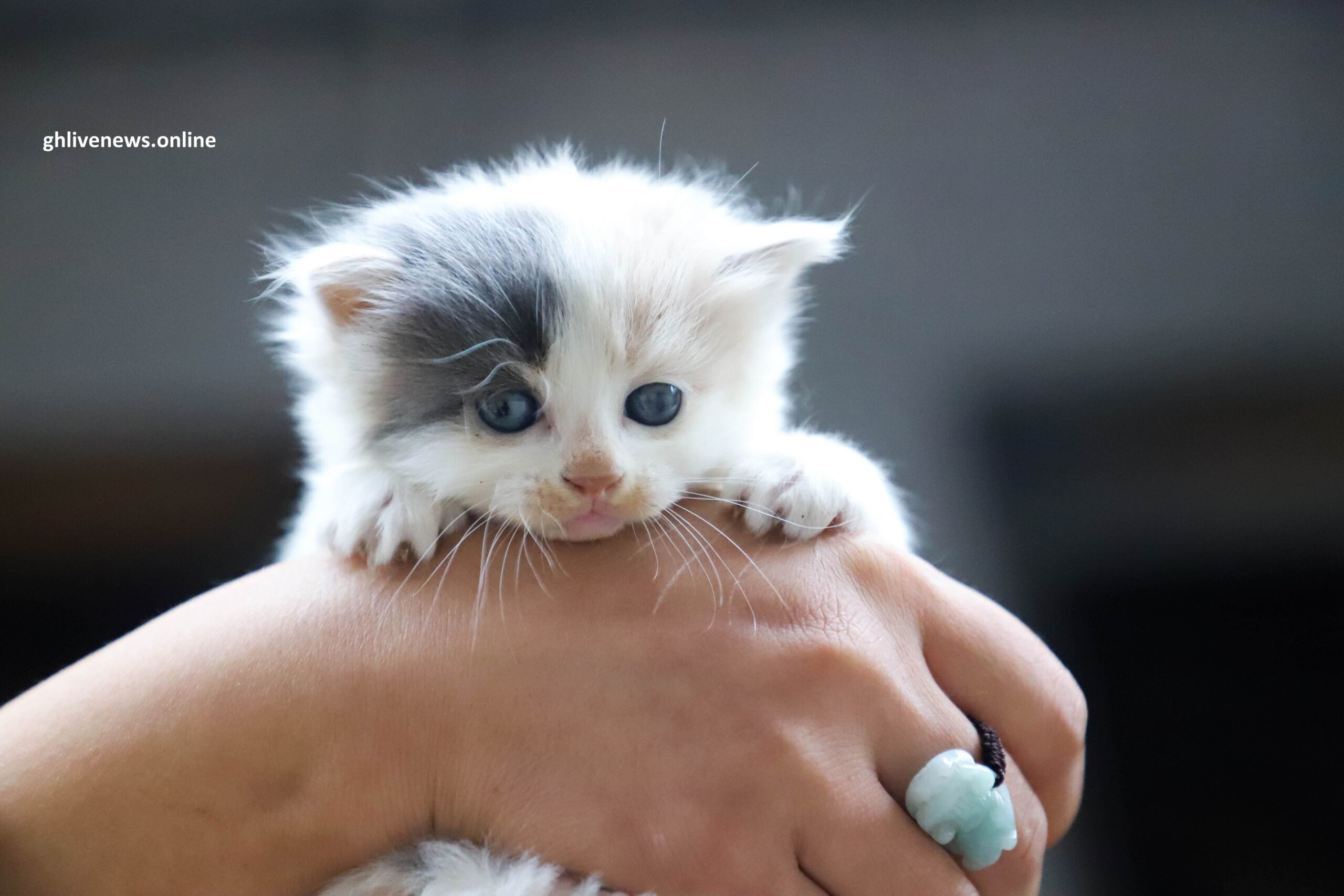Key Takeaway:
- Cancer is one of the most common health issues in cats, with symptoms that may include weight loss, lumps, and changes in appetite. Early diagnosis and treatment, including surgery and chemotherapy, can improve chances of survival.
- Diabetes is a chronic disease in which a cat’s body cannot properly regulate blood sugar levels. Symptoms may include increased thirst, urination, and appetite, as well as weight loss. Treatment may involve diet changes, insulin therapy, and monitoring glucose levels.
- Recognizing common cat health issues and seeking veterinary help in a timely manner can improve a cat’s quality of life and increase chances of successful treatment. Owners should monitor their cats for changes in behavior and seek veterinary care if they suspect any health issues.
Introduction
Cats are prone to various health issues that can affect their overall wellbeing. Understanding these issues can help pet owners provide appropriate care and treatment. This article discusses the common cat health issues and their symptoms. It is important for cat owners to be aware of the signs of sickness in their pets and seek veterinary help as needed. Additionally, maintaining good hygiene and providing a balanced diet can assist in preventing certain health problems.
Pro Tip: Regular check-ups with a veterinarian can help detect potential health issues early on.
Understanding the MECE Framework
Understanding the MECE Concept Professional Overview
The MECE framework refers to a problem-solving technique used to categorize information into mutually exclusive and collectively exhaustive parts. It is vital to understand the MECE Concept in any analysis, especially in the healthcare system. Proper implementation of this framework can help medical practitioners identify and solve health problems. By breaking down problems into exclusive and exhaustive sections, it facilitates a more straightforward approach to identify and address health issues.
The MECE Methodology and its effectiveness
The healthcare system faces unique challenges requiring modern analysis and management techniques. As such, it is essential to implement a reliable and efficient analysis approach, such as the MECE framework. The MECE concept allows healthcare practitioners to analyze health issues comprehensively and holistically. It also ensures that practitioners analyze problems from the root cause to achieve a definitive resolution. Dividing the problem into exclusive and exhaustive parts helps to ensure that no issue is left unaddressed, and all the potential solutions are considered.
Unique Details of the MECE Framework
The MECE framework is not limited to health analysis. Its core principle of exclusivity and exhaustiveness makes it a versatile tool in decision-making processes. Its flexibility allows its application in various sectors, providing conclusive and reliable results. Its versatility makes it a preferable choice for healthcare systems as it ensures that the health of individuals and communities is addressed effectively.
Pro Tip
To ensure the MECE framework’s effectiveness, it is vital to avoid overlapping categories and to identify all potential causes of an issue. Proper implementation of this framework can facilitate the efficient and effective resolution of healthcare issues.
Common Cat Health Issues and Symptoms: Cancer
As a cat lover, I know that keeping our fur babies healthy is a top priority. Unfortunately, cats, like humans, can suffer from cancer. In this segment, we’ll explore one of the most prevalent conditions affecting our feline friends: cancer. We’ll examine the causes and symptoms of cancer in cats and discuss the various factors that may contribute to the development of this disease. Additionally, we’ll look at the methods used to diagnose and treat cancer in cats, so that you can be better prepared in case your cat ever falls ill. According to the Reference Data, one in five cats is diagnosed with cancer, which makes this knowledge that much more important to have.
Causes and Symptoms of Cancer in Cats
Cancer is a critical health issue in cats. Identifying the causes and symptoms of cancer in cats is essential. Common causes of cancer in cats include exposure to toxins, hereditary factors, and age.
Symptoms of cancer may vary depending on the type but may include lethargy, weight loss, and loss of appetite. Identifying such symptoms can help detect cancer at an early stage, increasing one’s chances of recovery.
It is crucial to seek veterinary attention immediately if you suspect that your cat has cancer. Early diagnosis of cancer in cats increases survivability rates with higher chances of returning to healthy lives. Conducting regular health check-ups for cats helps detect any issues early on for prompt medical attention can reduce the impact of cancer on your cat’s overall wellbeing prolonging their life expectancy.
Treating cancer in cats is no easy feat, but with the right treatment plan and a bit of luck, your feline friend can become a cancer survivor.
Diagnosing and Treating Cancer in Cats
Cancer in cats can be diagnosed and treated using various methods. The earlier the diagnosis is made, the better chances of recovery for the pet. Once a cat shows symptoms such as weight loss, difficulty swallowing, or changes in behavior, a veterinarian will perform a physical examination and order diagnostic tests such as blood work, urinalysis, x-rays, or ultrasound to determine the extent of the disease.
If cancer is confirmed, treatment options may include surgery, chemotherapy, radiation therapy or a combination of these methods. The best approach depends on the type and location of cancer and its stage. Surgery may be recommended to remove tumors while chemotherapy helps to destroy any remaining cancer cells. Radiation therapy aims to destroy cancer cells with high-energy radiation that targets only the affected area.
It’s worth noting that radiation therapy may have side effects such as skin irritation or gastrointestinal upset but can also cause remission in cats with certain types of cancer.
The important thing for cat owners is to seek veterinary help immediately if they notice any symptoms of cancer in their pets. Early detection increases the chances of successful treatment and ultimate recovery for their furry friends.
Diabetes in cats is no joke, but neither is a cat that thinks they’re a donut.
Common Cat Health Issues and Symptoms: Diabetes
According to the reference data, there are common health issues that our feline friends can experience. My cat has struggled with diabetes, and it’s been challenging to understand the different types and symptoms. I have researched and learned that there are several signs to watch out for if you suspect your cat might have diabetes. Along with the types and symptoms of the condition, it’s also essential to understand the causes and how to diagnose diabetes in cats to ensure they receive proper treatment.
Let’s dive deeper into the sub-sections Types and Symptoms of Diabetes in Cats and Causes and Diagnosing Diabetes in Cats to understand more about this disease.
Types and Symptoms of Diabetes in Cats
The metabolic disorder of cats, known as “Feline Diabetes,” is often challenging to diagnose. Listed below are some common Types and Symptoms of Diabetes in Cats:
- Type 1: Insulin-dependent diabetes – This type of diabetes usually affects young cats but can happen in older ones too. Its symptoms include vomiting, weight loss, excessive urination and thirst.
- Type 2: Non-insulin dependent diabetes – This form of diabetes is commonly seen in obese cats or middle-aged felines. The symptoms include lethargy, increased appetite, and frequent urination.
- Reactive hypoglycemia – This condition occurs when the diabetic cat’s blood sugar levels become too low. Its symptoms include disorientation, weakness, and seizures.
Besides these types and symptoms of diabetes in cats, it is essential to note that the early signs are not always apparent. Thus, it would be better to give frequent check-ups to your cat if you suspect any abnormalities in their behaviour.
A remarkable medical study shows that like humans, cats experience insulin resistance and eventual elevated glucose levels as they age. Hence it is relatively common amongst middle-aged felines developed with obesity problems leading to severe health complications like blindness if not treated early.
Diabetes in cats is no sweet deal, but early diagnosis and treatment can give them a fighting chance.
Causes and Diagnosing Diabetes in Cats
Cats are susceptible to diabetes, which occurs due to various factors, including obesity, genetics, and age. Diagnosing this disease in cats involves analyzing their blood sugar levels through a blood test and testing for glucose in their urine. Common symptoms of feline diabetes include excessive thirst and urination, weight loss despite an increased appetite, lethargy, and vomiting.
To prevent or manage this condition in cats, pet owners should:
- maintain their weight within healthy limits
- feed them a well-balanced diet with low carbohydrate content
- exercise them frequently
- comply with veterinary prescribed insulin therapy.
Conclusion: Importance of Recognizing Common Cat Health Issues and Seeking Veterinary Help in a Timely Manner
Recognizing common cat health issues is crucial for ensuring their well-being. Seeking veterinary help in a timely manner can prevent these problems from worsening. Common symptoms like coughing, sneezing, vomiting, and changes in appetite or activity levels should not be overlooked. By observing and addressing any changes promptly, cat owners can ensure that their pets lead healthy, happy lives.
It is important to note that some health issues may not have visible symptoms, making regular check-ups with a veterinarian essential. Veterinarians are trained to detect any underlying conditions and provide appropriate treatment. As mentioned in the article “Common cat health issues and symptoms,” urinary tract infections, worms, and dental issues are some common health concerns among cats that require veterinary attention. By being vigilant and seeking professional help on time, cat owners can save their pets from unnecessary suffering.
According to the source, the most common cause of urinary tract infections in cats is bacteria. These infections can lead to serious health issues if left untreated, including kidney damage and bladder rupture. Therefore, recognizing symptoms such as blood in urine and frequent urination is essential for timely intervention.
Five Facts About Common Cat Health Issues and Symptoms:
- ✅ Cancer is a common disease in cats and can be both hereditary and environmental in cause. (Source: Team Research)
- ✅ Symptoms of cancer in cats include lumps, swelling, weight loss, and changes in behavior. (Source: Team Research)
- ✅ Diabetes in cats is a complex disease caused by a lack of insulin or an inadequate response to the hormone. (Source: Team Research)
- ✅ Symptoms of diabetes in cats include increased thirst, excessive urination, and lethargy. (Source: Team Research)
- ✅ Obesity, gender, and age are factors in the development of diabetes in cats. (Source: Team Research)
FAQs about Common Cat Health Issues And Symptoms
What are some common cat illnesses that every cat parent should know?
As a cat parent, it is essential to recognize and understand the signs and symptoms of common illnesses that frequently impact cats. Some of the most common cat illnesses include skin cancer, lymphosarcoma, diabetes, breathing difficulty, urinating difficulty, and behavior changes, among others.
What are the causes of skin cancer in cats?
Skin cancer in cats is caused due to repeated exposure to the sun. Squamous cell carcinoma of the ear, eyelid, or nose is a skin cancer caused by the sun. White or light-colored cats are more susceptible to squamous cell carcinoma.
How is cancer diagnosed in cats?
If a lump is present, the first step in diagnosing cancer in cats is usually a needle biopsy to remove a small tissue sample for microscopic examination of cells. Radiographs, ultrasound, blood evaluation, and other diagnostic tests may also be helpful in determining if cancer is present or if it has spread.
What treatments are available for cats with cancer?
Treatment options for cats with cancer vary and depend on the type and stage of cancer. Common treatments include surgery, chemotherapy, radiation, and immunotherapy or a combination of therapies. Some cat owners opt for no treatment of the cancer, in which case palliative care, including pain relief, should be considered.
What is diabetes in cats?
Diabetes in cats is a complex disease caused by either a lack of the hormone insulin or an inadequate response to insulin. When a cat does not produce insulin or cannot utilize it normally, her blood sugar levels elevate. The result is hyperglycemia, which, if left untreated, can cause many complicated health problems for a cat.
What are the symptoms of diabetes in cats?
The symptoms of diabetes in cats include a change in appetite, weight loss, excessive thirst/increase in water consumption, increased urination, urinating in areas other than litter box, unusually sweet-smelling breath, lethargy, dehydration, unkempt hair coat, and urinary tract infection.
Originally posted 2023-06-25 12:33:38.






